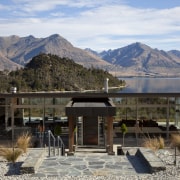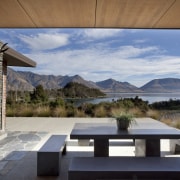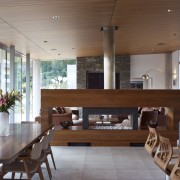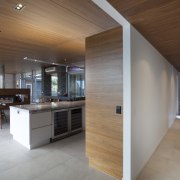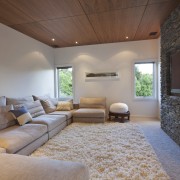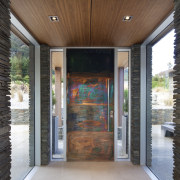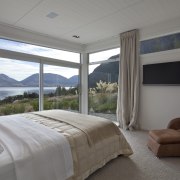At one with the scenery, home by Fat Hippo Design Group
This house by Nathan Shearing has an unobtrusive roof plane
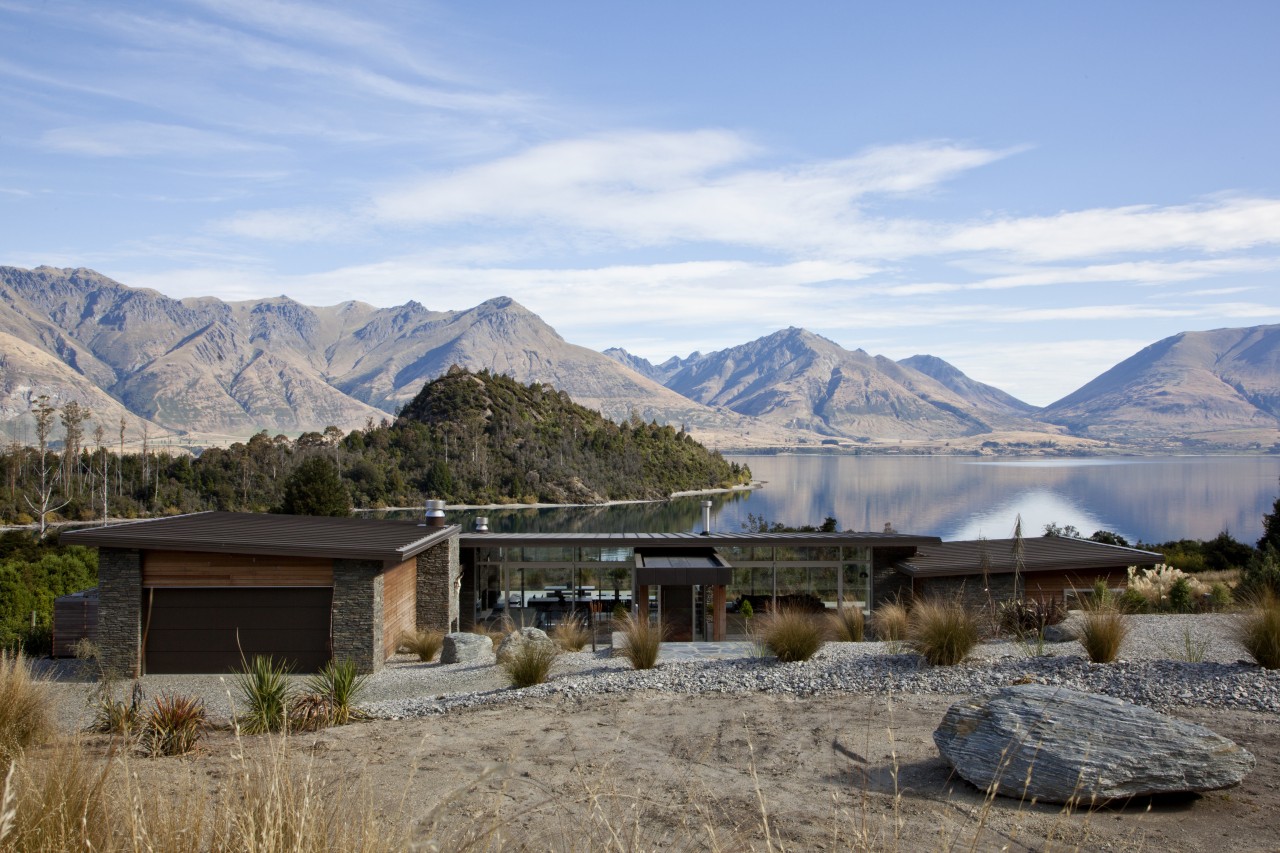
There are several ways to integrate a house into a natural setting. One is to set it low on the land; another is to use local materials. A more radical approach is to allow almost unbroken views through the home to the scenery behind.
This residence, by architectural designers Nathan Shearing and Martin Gvardijancic of Fat Hippo Design Group, combines all three strategies to create a holiday home that celebrates the mountain setting, without detracting from it.
Shearing says the design was shaped by several factors, including the nature and orientation of the site, and the request from the owners that they be able to enjoy the scenery from any room. There was also a requirement for privacy from the neighbours.
"We set the structure low on the long, narrow section as there was no need to build over two levels to capture the views. This in turn provides some privacy from a distance, as the hillside partly obscures the house from the street. It also helps ensure the house does not dominate the setting."
Another consideration was the northern sun, which penetrates from the same side as the entry the side opposite the main outlook.

"To optimise views and privacy, we created a loose H-shaped design. The long central bar comprises the living space, which is much like a viewing gallery, completely walled in glass. A guest suite and garage are in the left-hand wing while the other, smaller wing contains the master suite.
"Fundamental to the design was the concept of being able to look right through the interior from the approach. To optimise transparency, we designed a slender central roof plane, tilted at an angle that makes it almost invisible when viewed from above. The angle also matches the gradient of the land and the interior steps, to enhance this effect. And the tilt of the roof optimises the sun, allowing it to flood into the interiors from the north."
The wings provide privacy from neighbours and enfold outdoor living areas on the entry side of the house, sheltering them from cold winds that blow off the lake.
"Unlike many houses designed to focus on magnificent scenery, this one does not conceal the outlook from the exterior, revealing it only once you step inside. Here, only the front door is opaque," says Shearing.
"Indoors, the glass and steel design offers spectacular 180º outlooks from the long living area and both wings. In fact, the only room that doesn't take in the mountains and lake is the media room. We deliberately enclosed this space to provide a contrasting retreat from the light-reflecting snowy surroundings."
Material selection plays an important part in the character of the home and helps draw it even more closely into the landscape.
"The cladding is locally sourced stacked schist stone which blends with the surrounding rocky crags. Similarly, the cedar weatherboards have weathered to a silver grey tone that matches the nearby forest of silver beech trees. The front door is in copper, which will also develop a natural patina over time.
"In addition, the timber ceilings run from indoors out to the soffit overhangs, further helping indoors and outdoors to merge. Matching tones on the inside and outside tilework adds to this effect.
"The fact that this house is used as a holiday home by the current owner was an influence on the design. It features a minimal energy mode, for when the house is unoccupied, to protect it from extreme variations in temperature. Careful consideration has being given to modern heating systems to cope with the expansive glazing."
When the overseas-based owners arrive, they often bring their children and grand-children. The house is well set up for several families, with the master suite and guest bedrooms separated by the living areas. An office space between the living area and master suite provides another buffer for privacy.
Credit list
Architectural designers
Kitchen designer
Kitchen manufacturer
Roofing
Paints and varnishes
Benchtops
Refrigeration
Builder
Landscape designer
Cladding
Tiling
Lighting
Heating
Oven, cooktop, ventilation and dishwasher
Story by: Trendsideas
Home kitchen bathroom commercial design
Colourful and casual
Underpinning the artistic
Connected to the ocean


